12 Types Of Beautiful Yellow Spring Flowers: A Guide to Brighten Up Your Garden
Picture this: the frosty grip of winter finally recedes, and the world begins to awaken with a burst of color and life.
And what better way to celebrate the arrival of spring than with a glorious array of yellow blooms?
These sunny, vibrant flowers are the perfect way to banish those winter blues and usher in the warmer, brighter days ahead.
Yellow flowers are a symbol of friendship, joy, and happiness, and they can add a bright and cheerful touch to any landscape.
With so many different types of yellow spring flowers available, it can be hard to choose which ones to plant.
Yellow spring flowers come in all shapes and sizes, from the small and delicate to the large and showy.
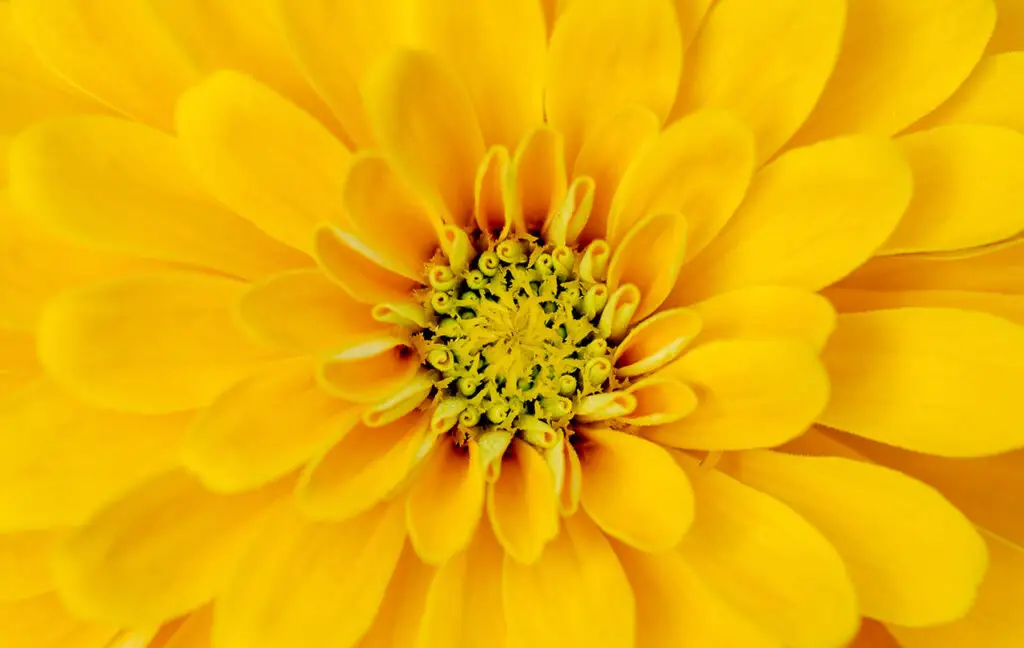
Some of the most popular types of yellow spring flowers include daffodils, tulips, hyacinths, and irises.
These flowers are easy to grow and care for, and they can add a burst of vibrant color to your garden in the early spring.
If you’re looking for something a little more unusual, you might want to consider planting some yellow begonias, marigolds, or sunflowers.
These flowers are sure to make a statement in your garden, and they can be a great way to add a bit of variety to your landscape.
No matter what type of yellow spring flowers you choose, they are sure to bring a smile to your face and brighten up your day.
So, my fellow flower fanatics, let’s embark on a botanical journey through the world of yellow spring flowers — the golden garden of delights that will have your heart singing and your spirits soaring!
Daffodils
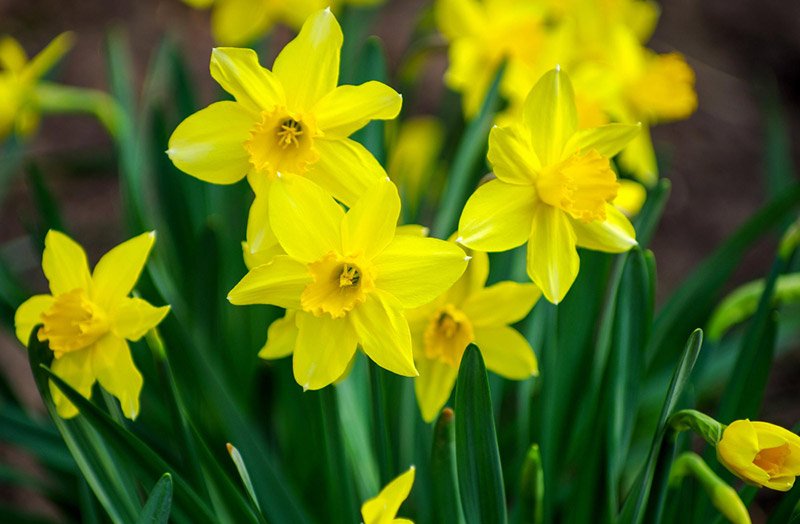
No discussion of yellow spring flowers would be complete without the iconic daffodil — a true harbinger of the season.
With their trumpet-shaped blooms and cheerful, sunny hue, daffodils are synonymous with springtime joy and renewal.
Daffodils, as you likely would guess, are one of the most popular spring flowers out there, and for good reason.
You’ll find them in a variety of different colors, but yellow daffodils are particularly stunning.
Whether you choose classic yellow varieties like ‘Dutch Master’ or opt for something more unique like the double-flowered ‘Tahiti,’ daffodils are a must-have addition to any spring garden.
Here are some of the most popular types of yellow daffodils:
- King Alfred: This classic daffodil has large, bright yellow blooms and a trumpet-shaped center. It’s one of the most recognizable daffodils and is great for naturalizing.
- Tete-a-Tete: This miniature daffodil has small, sunny yellow flowers that are perfect for rock gardens or containers.
- Ice Follies: This daffodil has large, creamy white flowers with a yellow center. It’s one of the earliest blooming daffodils and has a light fragrance.
- Carlton: This daffodil has large, yellow flowers with a trumpet-shaped center. It’s a great choice for naturalizing and has a long blooming period.
Daffodils are easy to grow and care for.
They grow best in well-drained soil and they like full sun over partial shade.
Plant the bulbs in the fall, about 6 inches deep and 4-6 inches apart.
Water them well after planting and then let nature take its course.
Daffodils are deer-resistant and make great cut flowers for that vase on your kitchen table.
Tulips
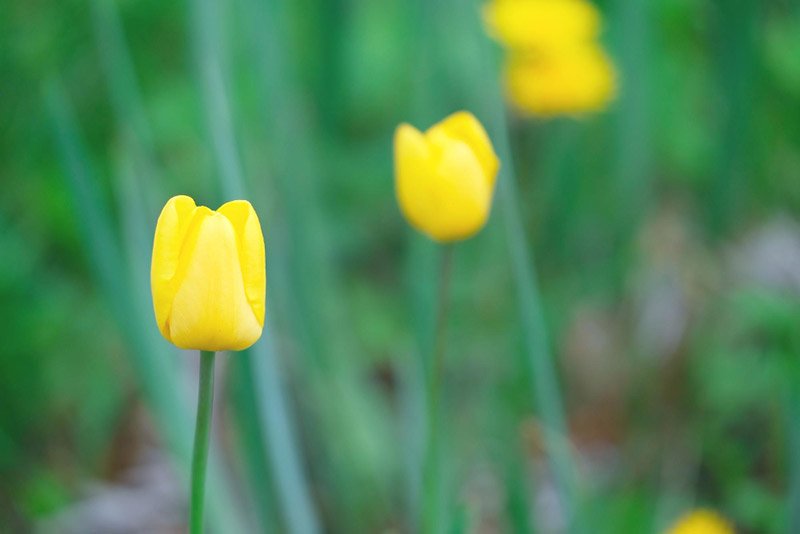
While tulips come in a vast array of colors, there’s something undeniably special about yellow varieties.
Yellow tulips are particularly popular because they bring a bright burst of color to any garden or floral arrangement.
From the buttery hues of ‘Yellow Purissima’ to the striking, two-toned ‘Golden Parade,’ yellow tulips exude warmth and happiness.
Plant a sea of these elegant blooms in your garden, and you’ll be rewarded with a dazzling display of sunshine shades that will leave you feeling positively radiant.
Here are some popular yellow tulip varieties:
- Antoinette: Produces yellow small ovoid flowers with raspberry-pink margins.
- Monsella: A specialty yellow tulip variety with dramatic red-streaked petals. These peony-like flowers have canary yellow petals with dark.
- Verona: Has pale yellow, cup-shaped flowers flushed with fresh green, epitomizing the new growth of spring.
- Yellow Springgreen: Yellow petals flushed with cream and with a soft green feathering in their center – a rich and beautiful combination.
Yellow tulips are great for adding a pop of color to your garden or brightening up your home.
They are also versatile and can be used in a variety of settings, from formal arrangements to casual bouquets.
When planting yellow tulips, be sure to choose a spot with plenty of sunlight and well-drained soil.
Tulips should be planted in the fall and will bloom in the spring.
It’s important to note that tulips are toxic to many animals, including cats and dogs, so if you have pets, make sure to keep them away from your tulips.
If you are using tulips in a floral arrangement, be sure to keep them away from pets and children.
Forsythia
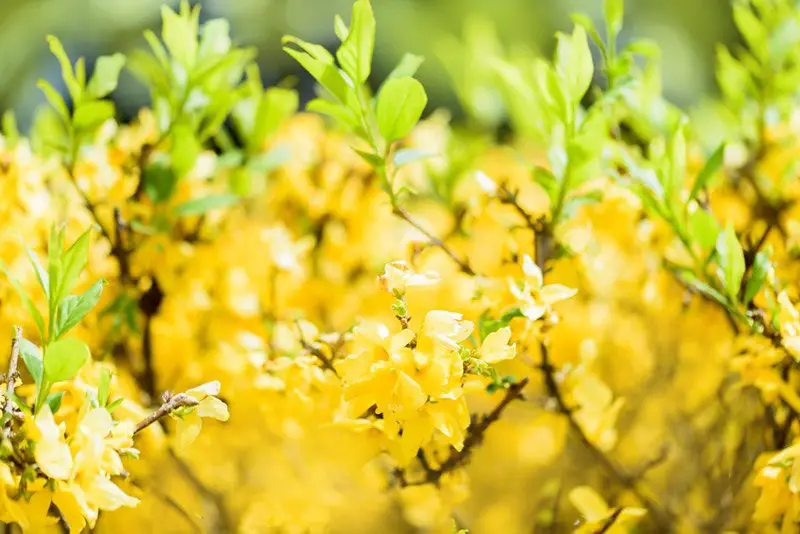
If you’re seeking a dramatic burst of color to herald the arrival of spring, look no further than the forsythia.
This deciduous shrub is covered in vibrant yellow flowers that bloom before its leaves, creating an unforgettable display in early spring.
The forsythia’s arching branches can be pruned into a hedge, or left to grow wild for a more natural, untamed look.
Either way, this golden explosion of blossoms is a surefire way to make a statement in your spring garden.
There are several varieties of Forsythia, each with their unique characteristics.
Here are some of the most popular types of Forsythia:
- Forsythia x intermedia: This is the most common type of Forsythia and is known for its large, bright yellow flowers that bloom in early spring each year. This beauty can grow up to 10 feet tall and wide.
- Forsythia suspensa: This type of Forsythia has a weeping habit, with its branches cascading down to the ground. Its flowers are a paler yellow than other varieties.
- Forsythia viridissima: This species of Forsythia has a more upright habit and is known for its dark green foliage. Its flowers are a deeper shade of yellow than other varieties.
Forsythia is a hardy shrub that is easy to grow and maintain.
It prefers full on sun to partial shade and you should plant it in well-draining soil.
It is also drought tolerant and can withstand cold temperatures.
One of the most significant advantages of Forsythia is that it is one of the first shrubs to bloom in the spring, making it an excellent choice for adding color to your garden after a long winter.
Its bright yellow flowers are a welcome sight and you can use them in cut flower arrangements.
Dandelions
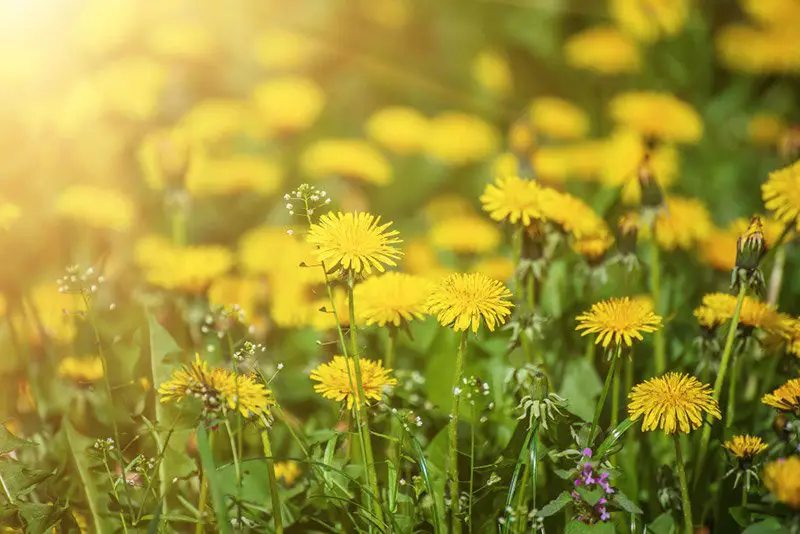
Often dismissed as a pesky weed, the humble dandelion deserves a moment in the spotlight.
Dandelions are one of the most recognizable spring flowers due to their bright yellow color and fluffy white seed heads.
This tenacious wildflower boasts sunny, yellow blooms that add a touch of child-like whimsy and cheer to any garden.
What’s more, dandelions are incredibly resilient, capable of thriving in various conditions and even pushing through cracks in concrete.
But the dandelion’s allure doesn’t end with its bright, cheerful flowers.
These hardy plants are also a rich source of vitamins, minerals, and antioxidants, which makes them an excellent addition to your salads, teas, and even homemade wines.
By welcoming dandelions into your garden, you’ll not only create a charming, golden display, but you’ll also be supporting local pollinators and embracing the natural, untamed beauty of wildflowers.
While some people consider dandelions to be a nuisance weed, they are actually quite useful.
The leaves and flowers of dandilions are edible and can be used in salads or brewed into tea.
Dandelion roots can also be roasted and used as a coffee substitute.
Scientific NameCommon Name
Taraxacum officinale Dandelion
Dandelions are also important to pollinators, as they provide an early source of nectar and pollen for bees and butterflies.
While dandelions are often considered a weed, they can also be a beautiful addition to any garden.
Their bright yellow flowers can add a pop of color to a spring garden, and their hardiness means they require little maintenance.
Kerria Japonica

For a touch of Asian-inspired beauty in your spring garden, consider the kerria japonica.
This charming, shade-tolerant shrub hails from the woodlands of eastern Asia and produces masses of delicate, yellow flowers that resemble miniature roses.
With its graceful, arching branches and vibrant blooms, the kerria japonica is a stunning addition to any garden, creating an enchanting, otherworldly atmosphere.
Hyacinths
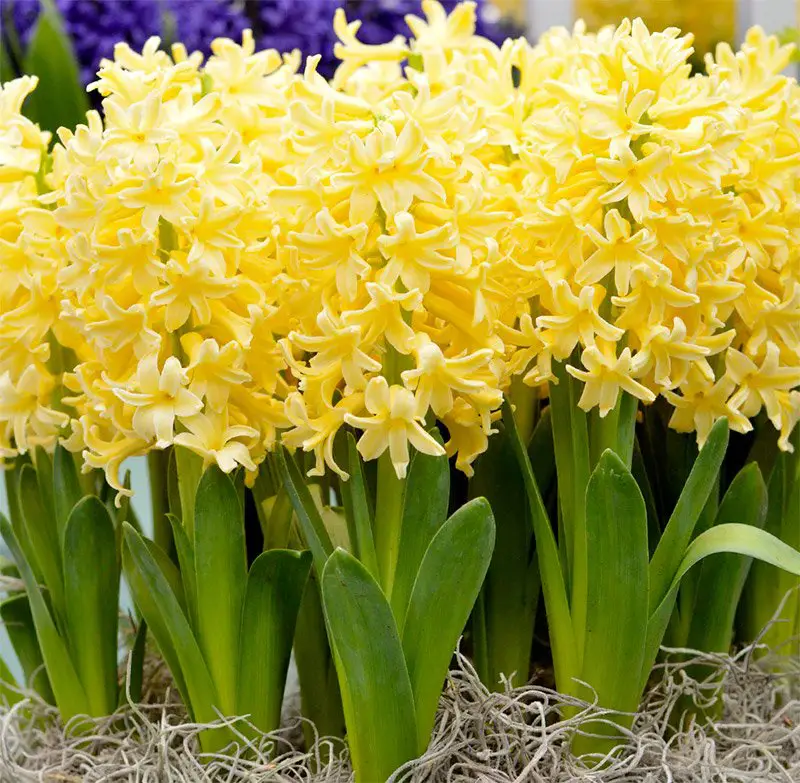
While hyacinths are often celebrated for their vivid hues of purple, pink, and blue, the lesser-known yellow varieties are a true hidden gem.
These fragrant, bell-shaped blooms create an enchanting and elegant display that will infuse your spring garden with a touch of magic and sophistication.
Yellow hyacinths, such as the ‘City of Haarlem’ variety, are renowned for their delightful, sweet fragrance.
This captivating scent wafts through the air, inviting you to linger in your garden and savor the beauty of springtime.
Plant these alluring flowers in borders, containers, or even as part of a fragrant, cutting garden, and you’ll be rewarded with a breathtaking sensory experience.
But don’t stop there! Hyacinths are also ideal for ‘forcing,’ a technique that allows you to enjoy their gorgeous blooms and intoxicating fragrance indoors.
By potting and chilling the bulbs for a period of time, you can coax them into flowering early, bringing a much-needed burst of color and fragrance to your home during the winter months.
Buttercups
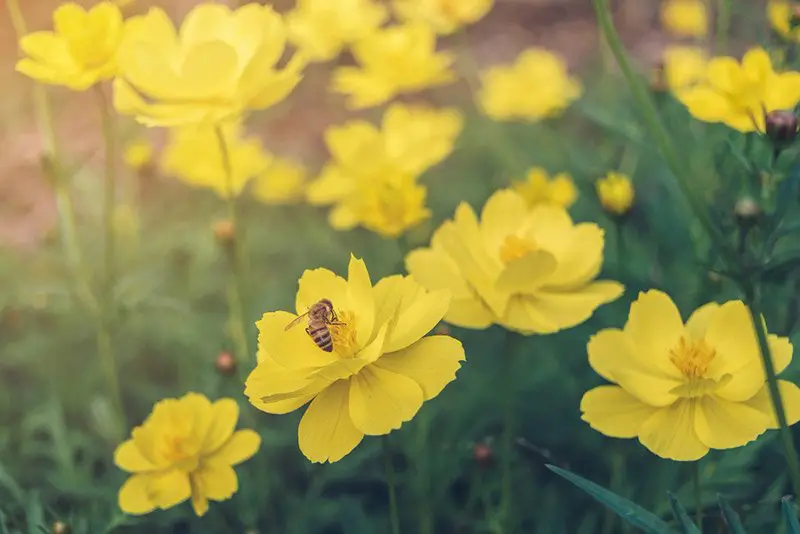
Buttercups are a genus of flowering plants in the family Ranunculaceae.
They are native to meadows and fields in Europe, Asia, and North America.
Buttercups are characterized by their bright and shiny yellow petals and green sepals.
There are over 400 species of buttercups, with some of the most common being the creeping buttercup (Ranunculus repens), bulbous buttercup (Ranunculus bulbosus), and meadow buttercup (Ranunculus acris).
The creeping buttercup is a perennial plant that grows up to 60 cm tall.
It has long runners that spread out and root at the nodes, forming dense mats.
The flowers are small and yellow, with five petals and green sepals.
The bulbous buttercup is a bulbous plant that grows up to 30 cm tall.
It has large, bright yellow flowers that bloom in early spring.
The meadow buttercup is a tall, erect plant that grows up to 90 cm tall.
It has large, bright yellow flowers that bloom in late spring and early summer.
Here’s quick look at: Common Name, Scientific Name, and Bloom Time:
- Creeping Buttercup, Ranunculus repens, Spring to Summer
- Bulbous Buttercup, Ranunculus bulbosus, Early Spring
- Meadow Buttercup, Ranunculus acris, Late Spring to Early Summer
Buttercups are often used in gardens and landscaping due to their bright yellow color and ease of cultivation.
They are also used in traditional medicine for their anti-inflammatory and pain-relieving properties.
However, it is important to note that some species of buttercups are toxic and can cause skin irritation and digestive problems if ingested.
Primrose
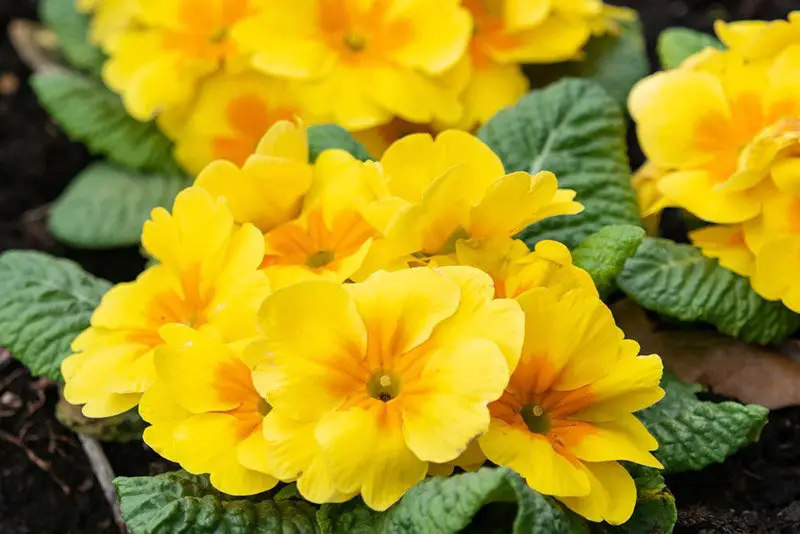
If you’re a fan of quaint, whimsical gardens, you’ll adore the humble primrose.
These low-growing perennials are beloved for their early-spring flowers, which bloom in a variety of colors — including, of course, delightful shades of yellow.
Plant a charming cluster of primroses along a garden path, under a tree, or at the edge of a flower bed, and you’ll be transported to a charming, storybook world of color and beauty.
Yellow Iris
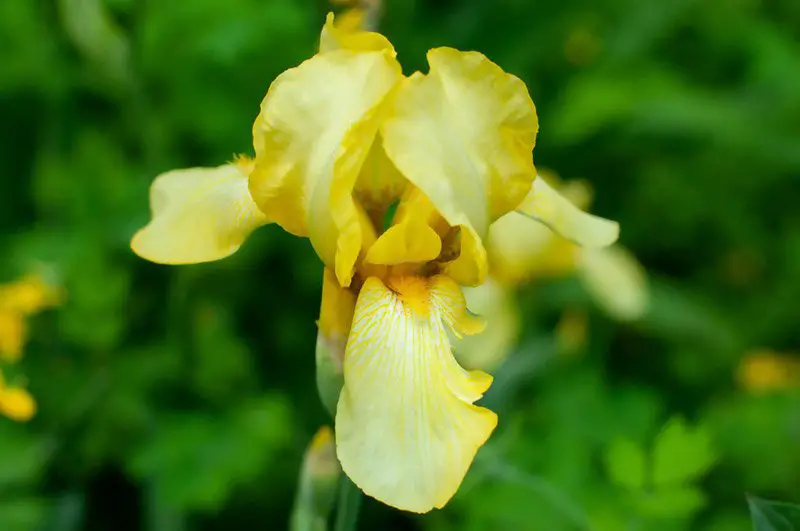
Known for their majestic, sword-like leaves and intricate, ruffled blooms, irises are a sight to behold in any garden.
While irises are often associated with shades of blue, purple, and white, the yellow varieties offer a unique and captivating alternative that’s sure to delight.
One such variety is the classic ‘Yellow Flag Iris’ (Iris pseudacorus), which thrives in wet, marshy conditions and can often be found gracing the edges of ponds and waterways.
With its bold, golden-yellow flowers and stately, upright foliage, this striking iris makes a dramatic statement in any water garden or damp area of your landscape.
But don’t worry if you don’t have a pond or boggy garden — there are plenty of other yellow iris options to suit your needs!
The ‘Harvest of Memories’ and ‘That’s All Folks’ varieties, for example, are beautiful bearded irises that can be grown in well-draining soil and full sun.
These dazzling blooms are perfect for adding a touch of sunshine to your borders, beds, or even as cut flowers in a vase.
In addition to their visual appeal, yellow irises also serve as an important source of nectar for pollinators like bees and butterflies.
By planting these golden beauties in your garden, you’ll be supporting local wildlife and contributing to a healthier, more vibrant ecosystem.
Yellow Begonias
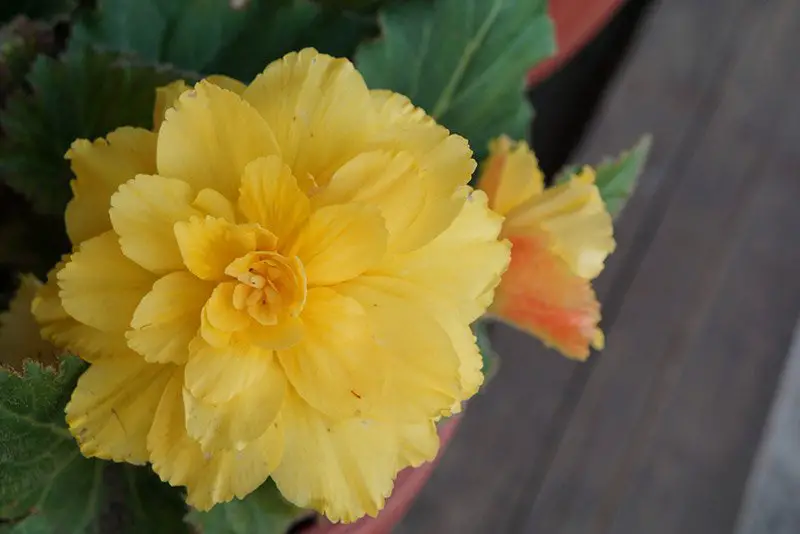
Begonias are beloved for their lush foliage and diverse, vibrant blooms — and the yellow varieties are no exception.
These cheerful, golden blossoms bring a splash of sunshine and joy to any garden, making them a perfect choice for those looking to brighten up their outdoor space.
Yellow begonias come in various shapes and sizes, from the large, double-flowered ‘Nonstop Yellow’ tuberous begonia to the smaller, delicate blooms of the ‘Yellow Delight’ wax begonia.
No matter your preference, these versatile plants can be grown in a range of settings, including containers, hanging baskets, or as part of a mixed border.
One of the standout features of yellow begonias is their ability to perform well in both sun and shade.
This adaptability makes them an excellent choice for gardeners with tricky, partially-shaded areas or those seeking to create a cohesive, colorful display throughout their garden.
Aside from their aesthetic appeal, yellow begonias are also relatively low-maintenance, requiring minimal pruning and upkeep.
Simply keep them well-watered and provide a balanced fertilizer, and they’ll reward you with a profusion of blossoms throughout the spring and summer months.
Yellow Marigolds
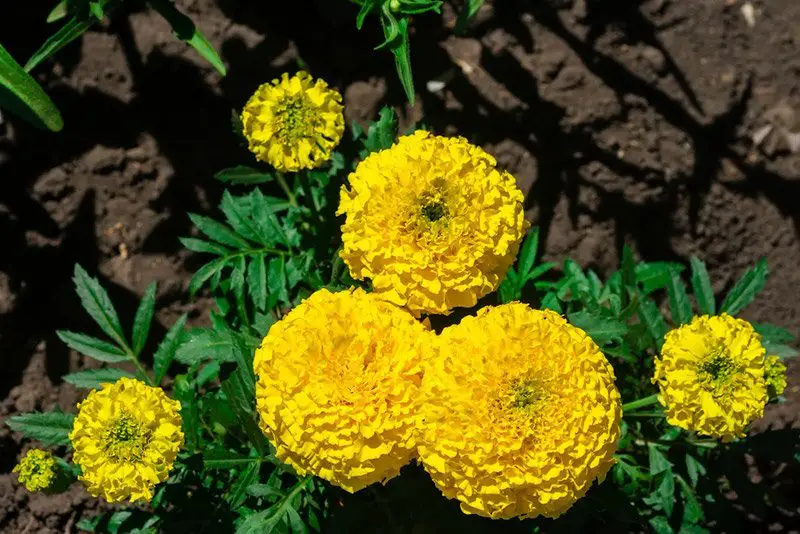
Marigolds, with their rich, warm hues and cheerful, daisy-like blooms, are a staple in many gardens — and for good reason.
These hardy, sun-loving flowers are not only visually stunning but also serve a variety of practical purposes, making them an invaluable addition to any spring garden.
Yellow marigolds, such as the ‘Yellow Boy’ or ‘Lemon Gem’ varieties, offer a burst of golden sunshine that’s sure to brighten up any outdoor space.
Plant them in full sun, and watch as they flourish, providing a lively and eye-catching display from spring through fall.
But the appeal of marigolds goes beyond their vibrant beauty.
These versatile plants are also known for their pest-repelling properties, making them an excellent companion for your vegetable garden or flower beds.
By planting marigolds alongside susceptible plants, you’ll create a natural barrier that deters pests such as aphids, whiteflies, and even rabbits.
Moreover, marigolds are incredibly low-maintenance, requiring little care beyond regular watering and deadheading to encourage continuous blooming.
This makes them an ideal choice for beginner gardeners or those seeking a fuss-free, yet striking addition to their garden.
Sunflowers
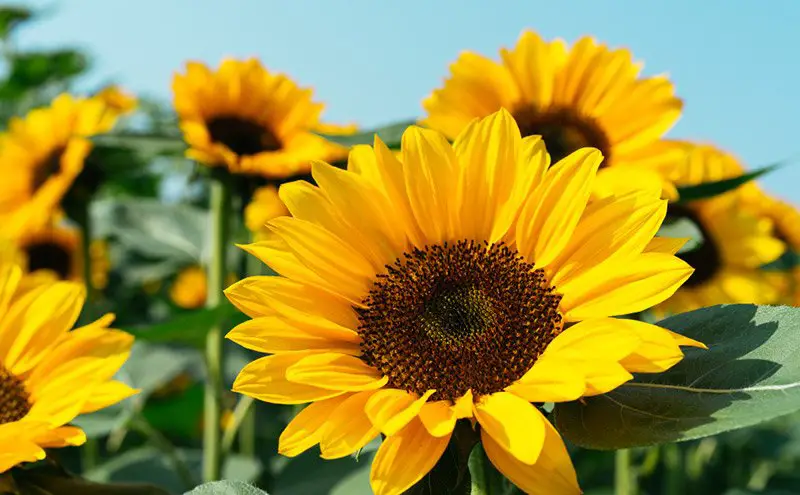
Few flowers evoke the spirit of sunshine and happiness quite like the iconic sunflower.
With their enormous, cheerful faces and towering stems, sunflowers are a stunning and instantly recognizable addition to any garden.
These bright, golden blossoms not only make a bold statement but also serve as a valuable resource for both humans and wildlife.
Sunflowers come in various sizes and types, ranging from the classic ‘Russian Giant’ and ‘Mammoth’ varieties, which can reach heights of 12 feet or more, to the smaller, more compact ‘Teddy Bear’ and ‘Sunny Smile’ sunflowers that are perfect for container gardening or smaller spaces.
While sunflowers are often associated with the height of summer, many varieties can be planted in late spring for an early burst of color.
By selecting early-blooming varieties such as ‘Solar Flash’ or ‘Sunny Bunch,’ you can enjoy the vibrant beauty of sunflowers throughout the warmer months.
Beyond their aesthetic appeal, sunflowers serve several practical purposes in the garden.
Their large, nectar-rich blooms attract pollinators like bees and butterflies, while their seeds provide a valuable food source for birds and other wildlife.
Additionally, sunflowers can be used as a natural trellis or screen, creating privacy and shade for more delicate plants.
Final Word
Yellow spring flowers are a great way to add color and vibrancy to your garden.
Whether you prefer daffodils or tulips, there are plenty of options to choose from.
In this article, we’ve explored some of the most popular types of yellow spring flowers, including yellow tulips, witch hazel, yellow iris, and winter aconite.
Yellow flowers are often associated with happiness, hope, and new beginnings.
They can brighten up any garden and add a touch of cheerfulness to your outdoor space.
Whether you’re looking to plant yellow flowers in a garden bed or in pots on your patio, there are plenty of options to choose from.
When selecting yellow spring flowers, it’s important to consider factors such as sunlight, soil type, and watering needs.
Some yellow flowers, such as daffodils, prefer full sun, while others, such as winter aconite, prefer partial shade.
By selecting the right flowers for your garden’s conditions, you can ensure that they thrive and bloom beautifully.
Overall, yellow spring flowers are a great addition to any garden.
They’re easy to grow, come in a variety of shapes and sizes, and can add a burst of color to your outdoor space.
So why not plant a few this spring and enjoy their beauty all season long?